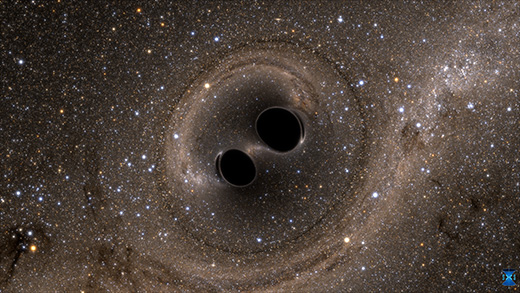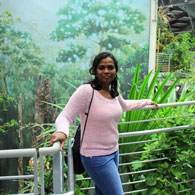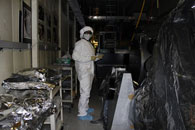Physicist contributes to discovery of gravitational waves, black holes
Monday, Feb. 22, 2016

The Laser Interferometer Gravitational-Wave Observatory, or LIGO, recently detected two black holes colliding. A Kansas State University physicist was part of the research team that made the discovery. | Photo credit: SXS.
MANHATTAN —A Kansas State University researcher has been involved in one of the biggest physics discoveries in decades: the detection of gravitational waves and black hole collision.
Manasadevi Thirugnanasambandam, Kansas State University research associate in physics, was a postdoctoral fellow for three years at the Laser Interferometer Gravitational-Wave Observatory, or LIGO. The team of scientists at the observatory recently detected gravitational waves from the collision of two black holes — a discovery that proves Albert Einstein's theory of general relativity.
"Although the LIGO team is super excited about the discovery, the real underlying reason for all the excitement is that the discovery has opened a new field of research in gravitational wave astronomy," Thirugnanasambandam said. "We will see the universe in a whole new way after this for sure."
At Kansas State University, Thirugnanasambandam is researching with Kristan Corwin and Brian Washburn, both associate professors of physics. She is working on two projects: building gas-filled fiber lasers and using laser spectroscopy to study agriculturally important gases.
Thirugnanasambandam is an optical physicist with expertise in building lasers. At LIGO, she worked with the team that upgraded the 40 meter LIGO prototype at California Institute of Technology. The prototype is a miniature version of the main LIGO detectors and is the test bed for ideas that improve the sensitivity of the detector. The prototype was important for upgrading to a newer generation of the detector, which was needed to accomplish the major discovery.
"The 40 meter prototype is where we build and test the solutions for the most important problem: how to bring the whole detector into a controlled state systematically so that we can get long hours of observation for the detector," Thirugnanasambandam said.
She also built test setups and performed experiments to troubleshoot some of the problems for the main detectors in Livingston, Louisiana, and Hanford, Washington.
The LIGO project spanned decades and involved experts in a variety of fields such as astrophysics, lasers, electronics and communications, mechanical engineering, vacuum technology, material science, data acquisition and more.
Thirugnanasambandam said it has been exciting to see the scientific community unite people all over the world for this cause.
"LIGO has been a work in progress for over 30 years and it is an honor to have worked alongside the pioneers in the field," Thirugnanasambandam said. "I feel extremely lucky that I got to share the excitement of the discovery with them."
She also is involved with the team that has worked to establish LIGO-India, which is a collaboration with LIGO and three research institutes in India. The project received approval from the Indian government on Feb. 17.


